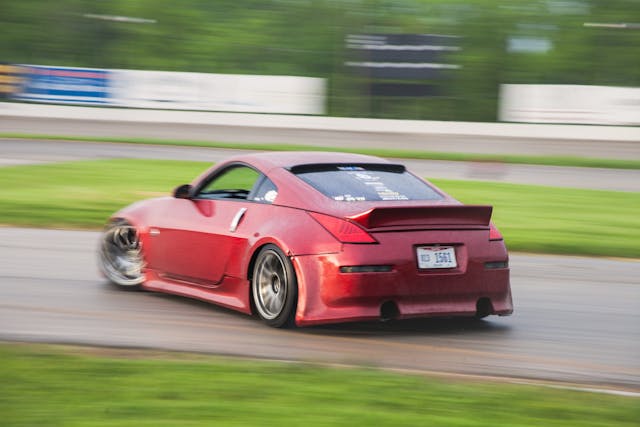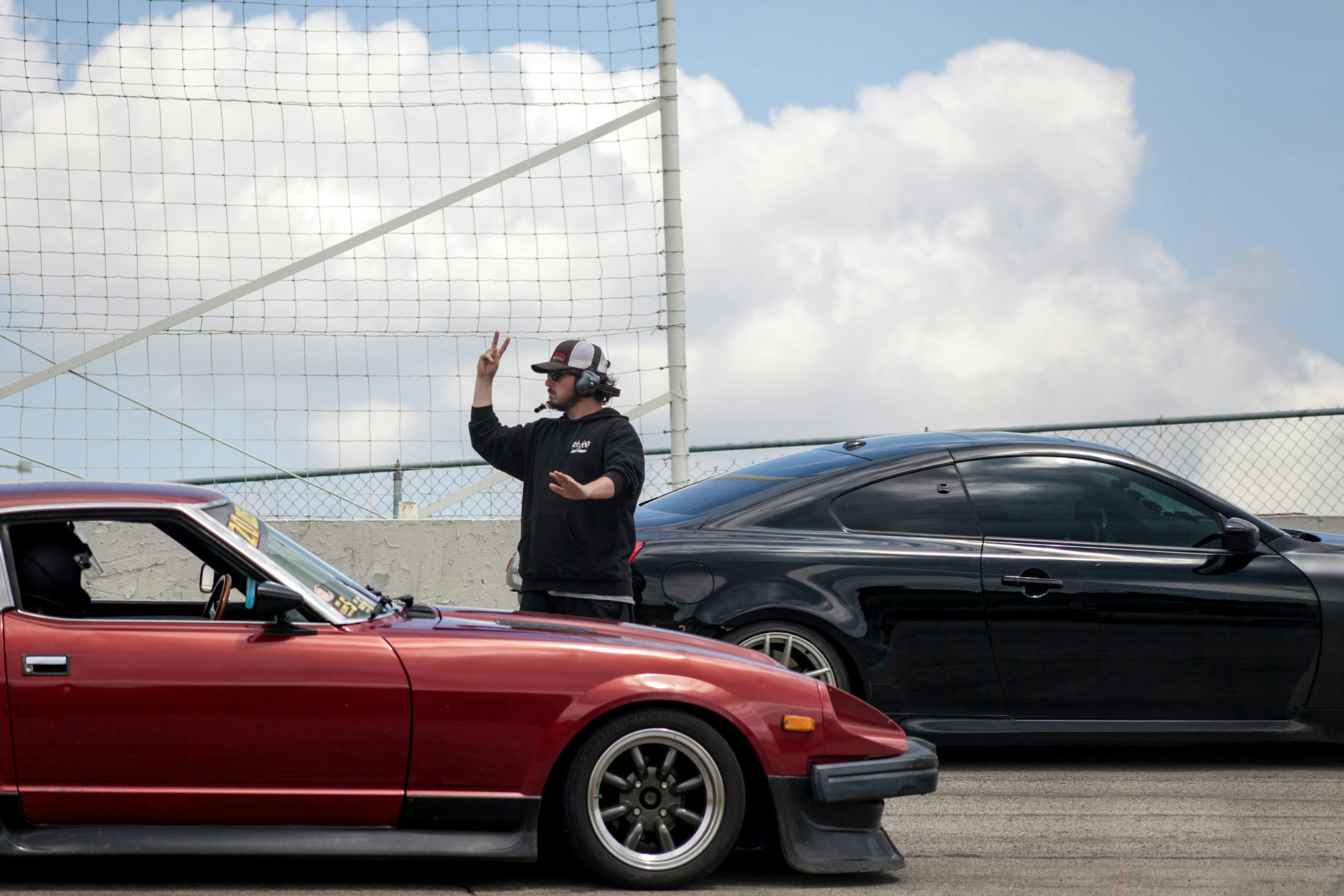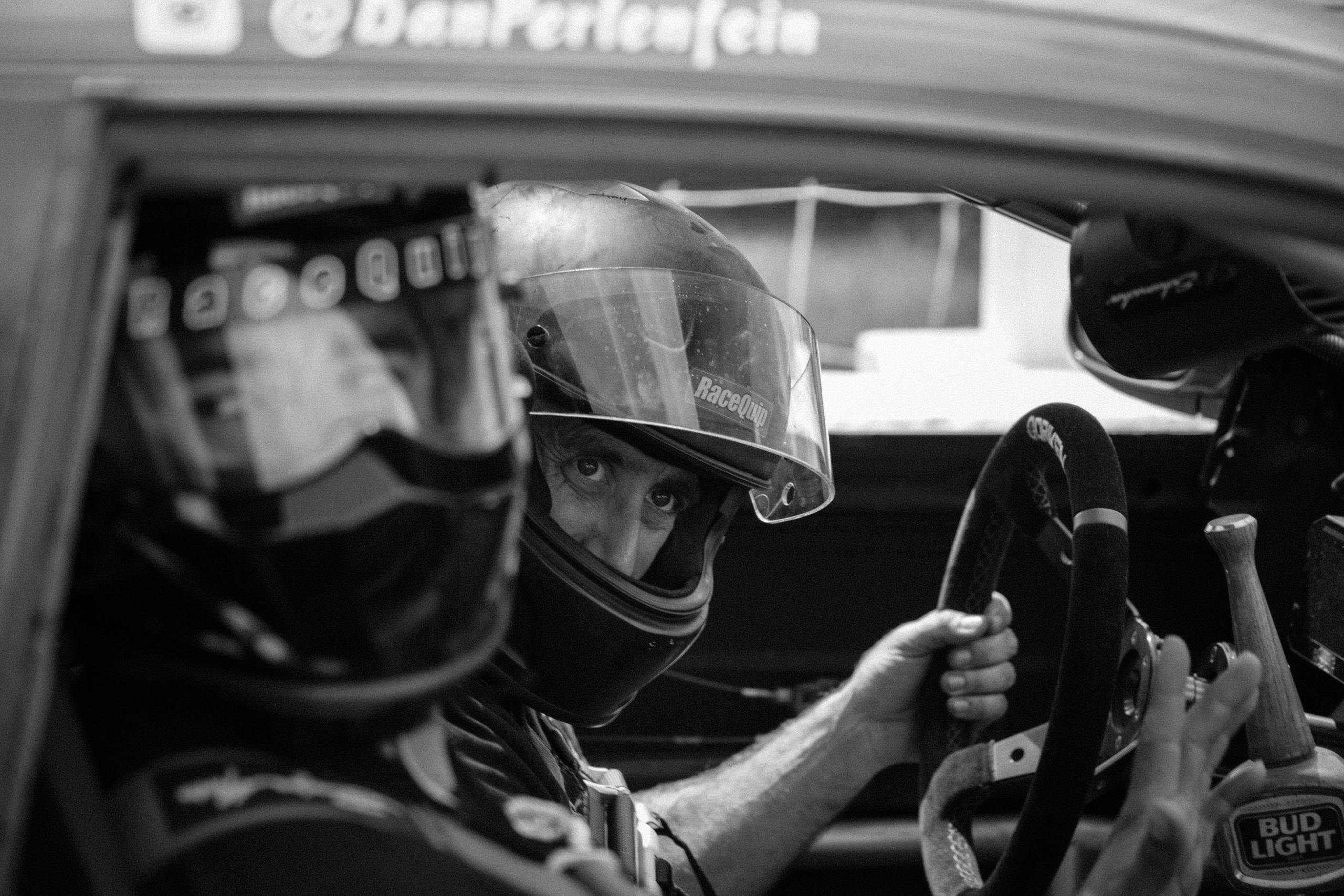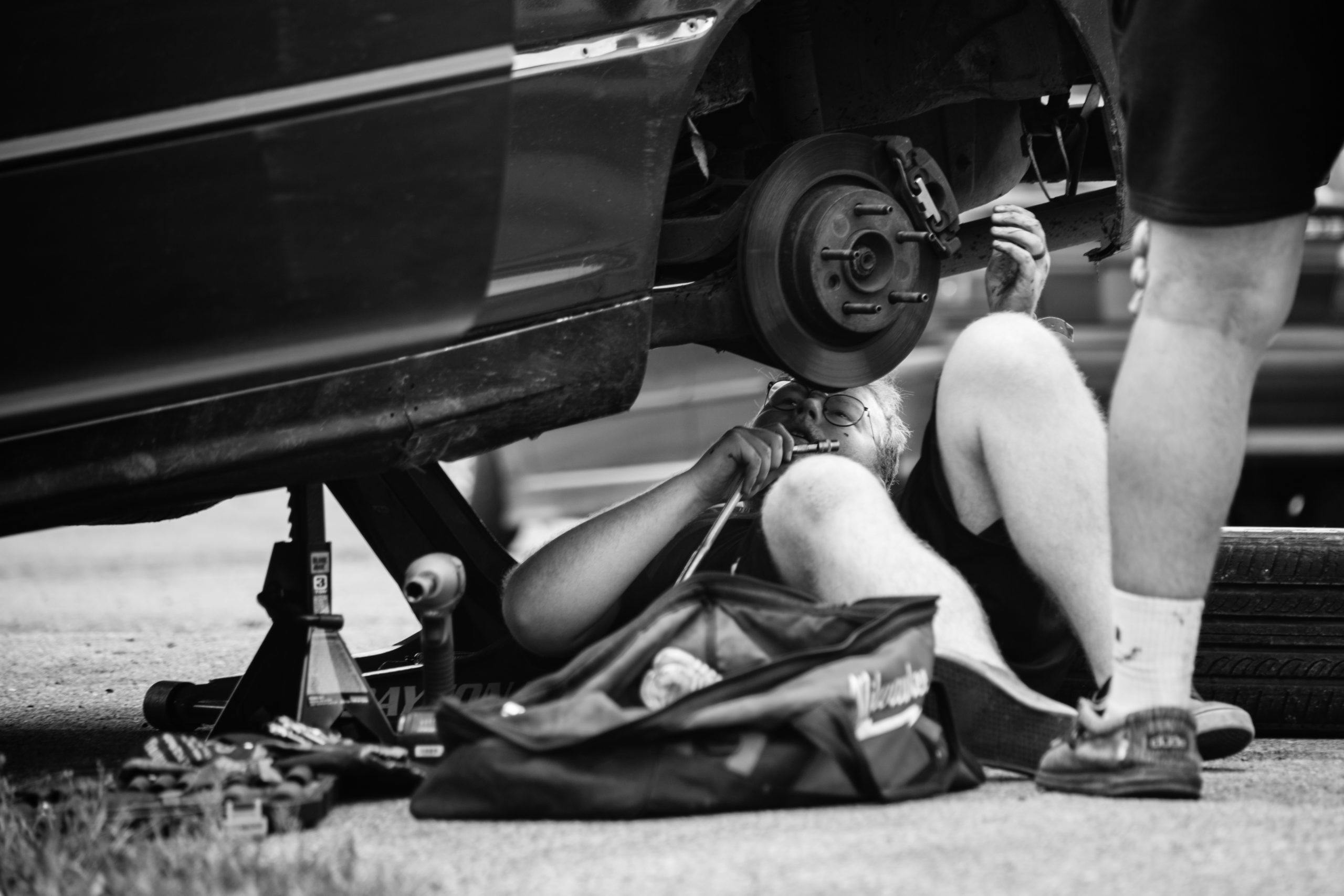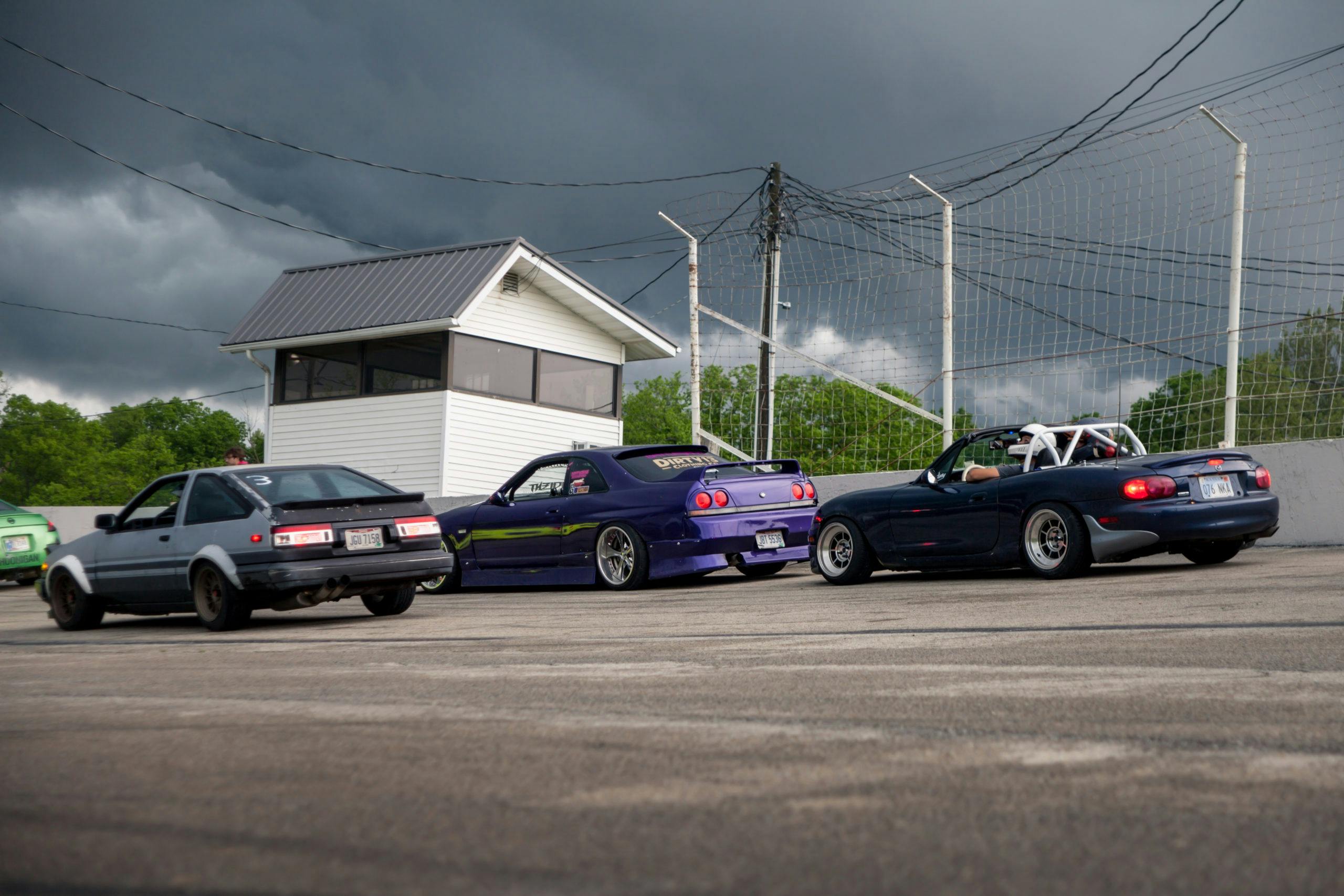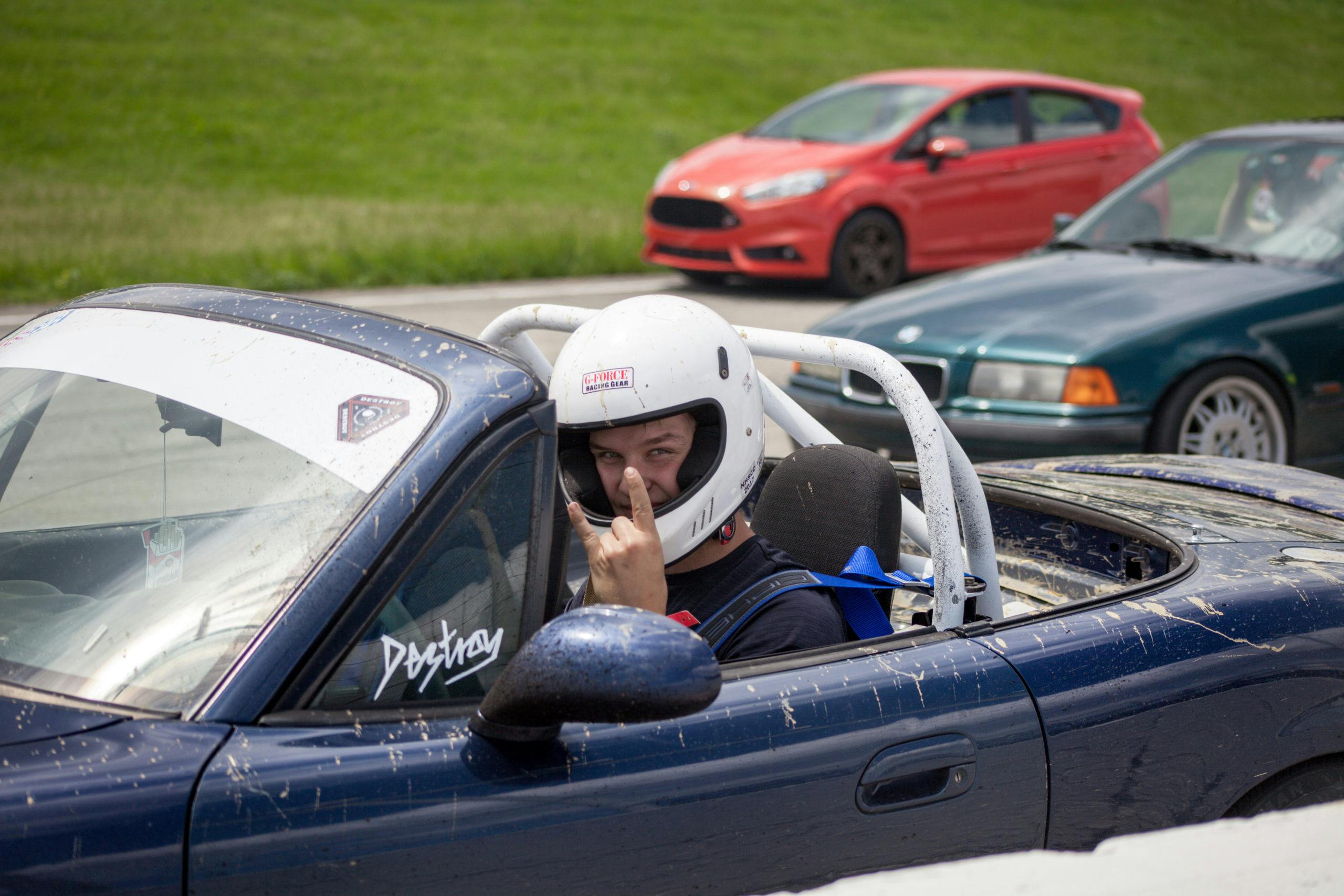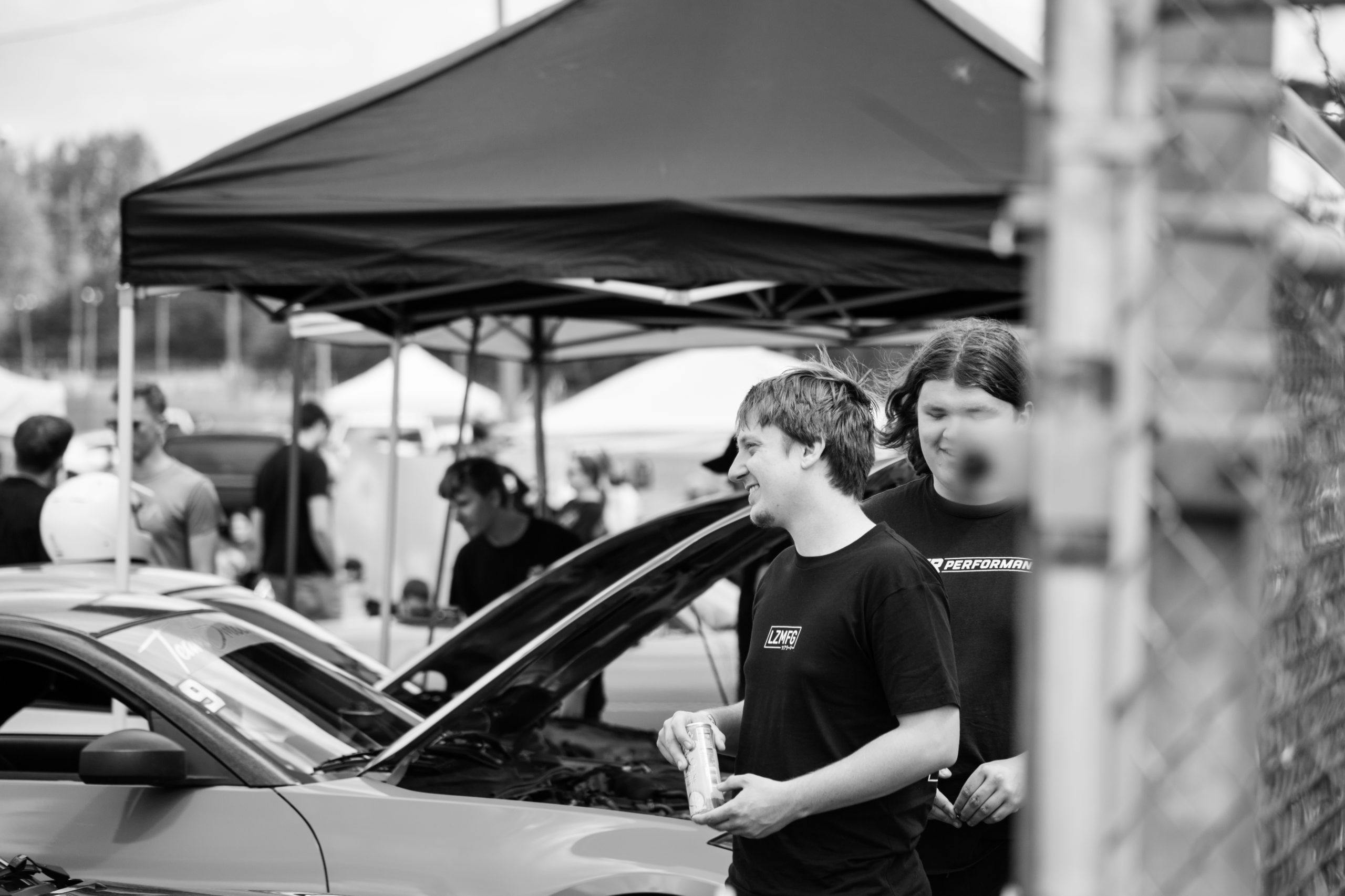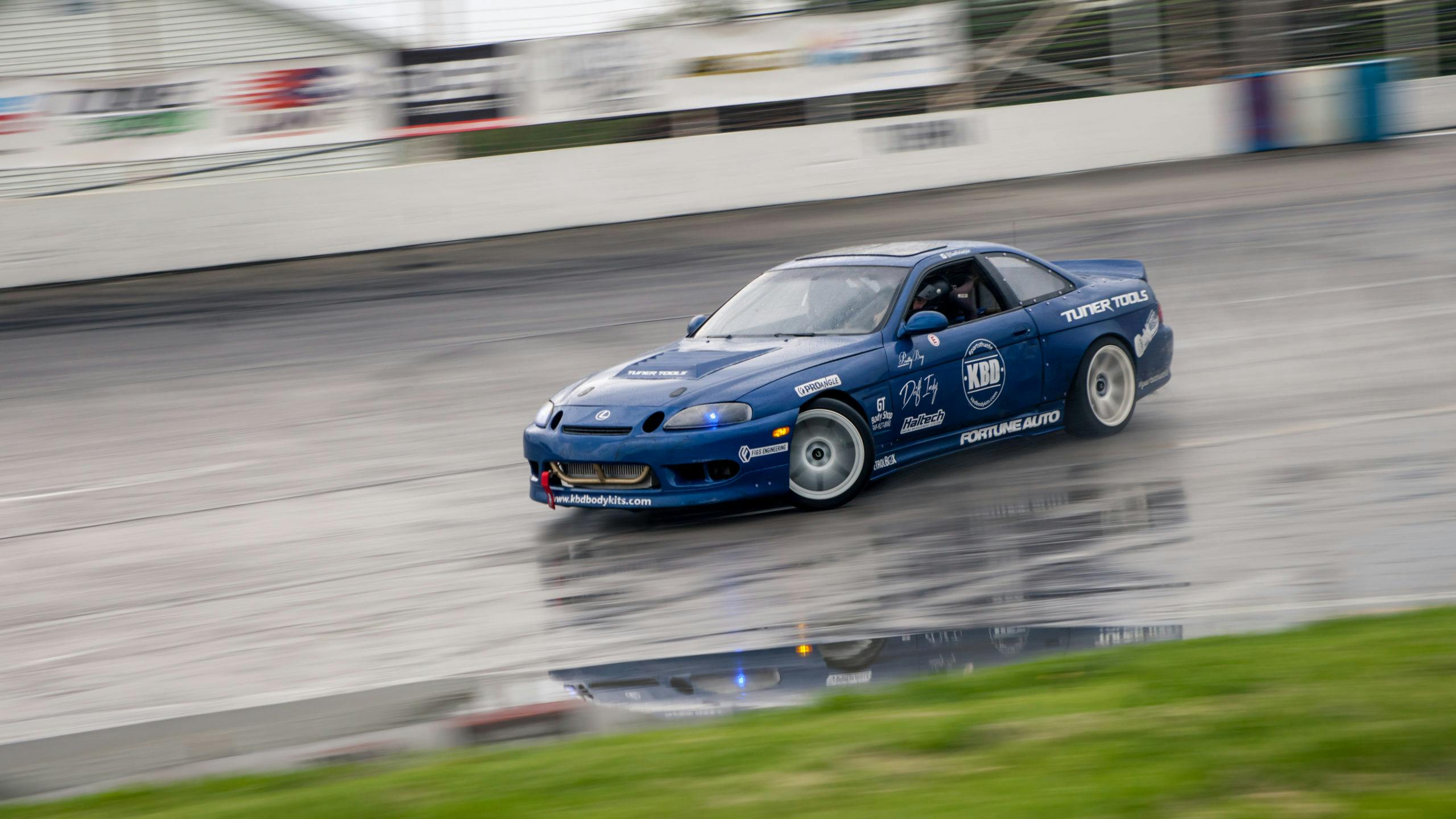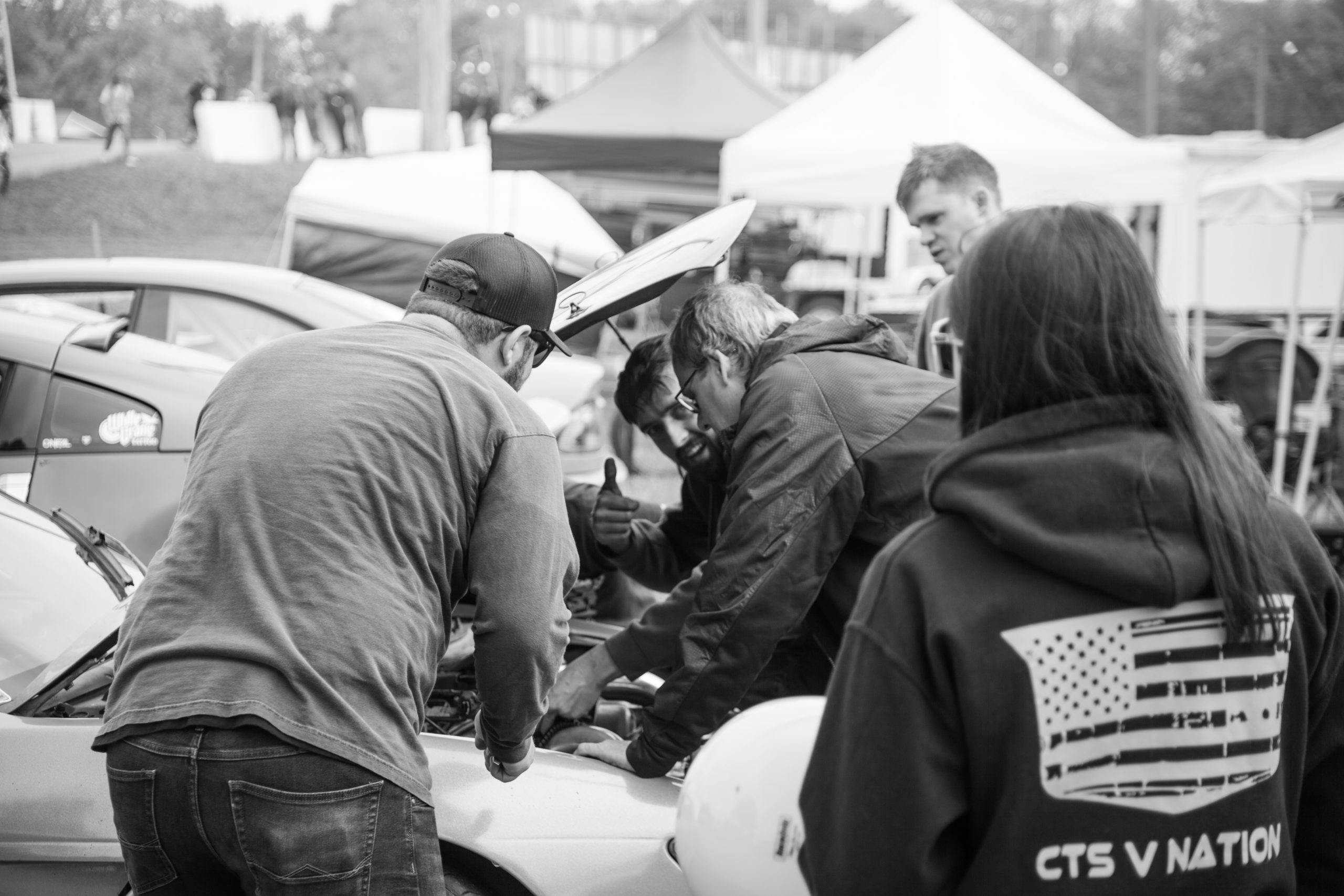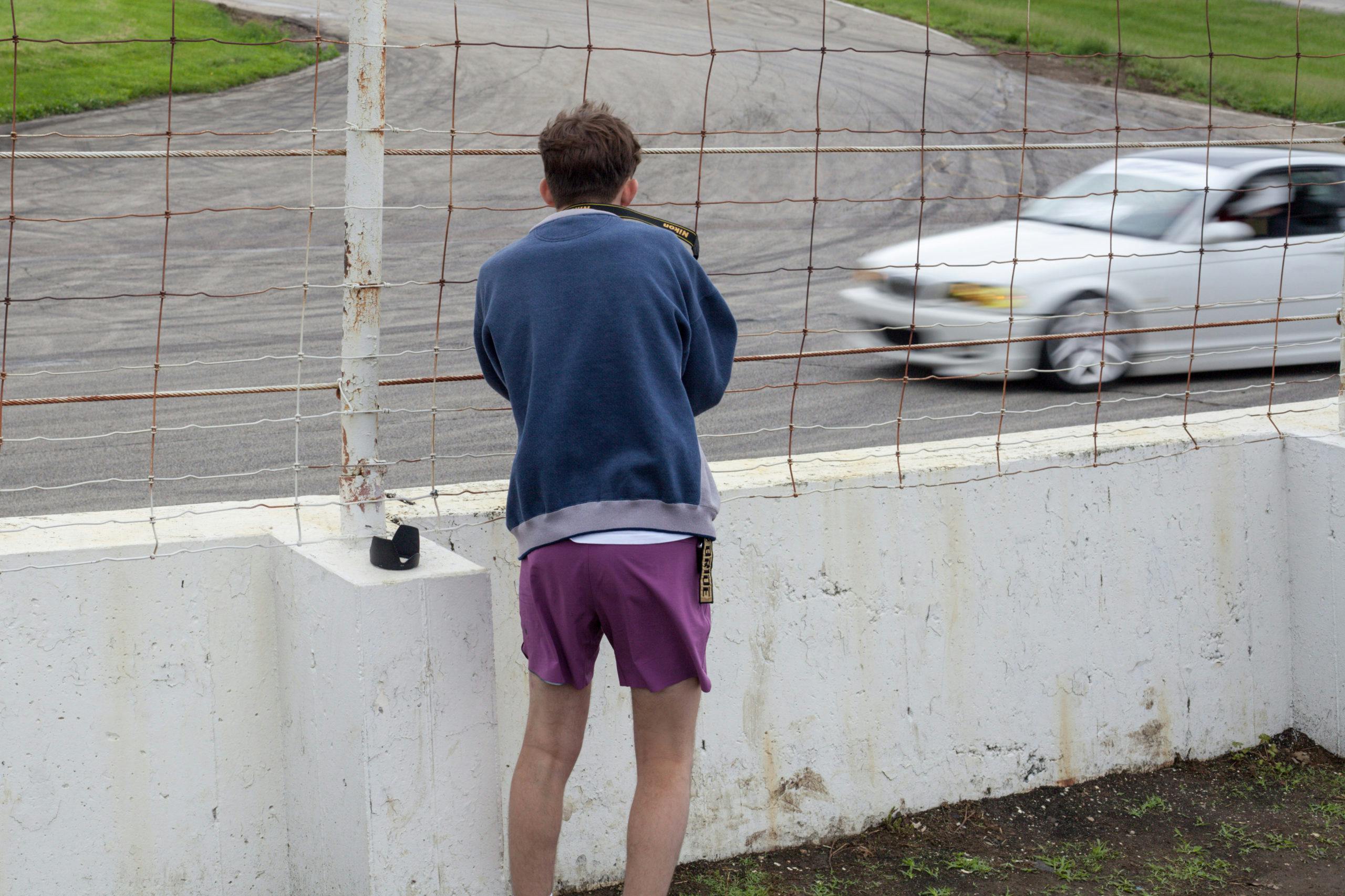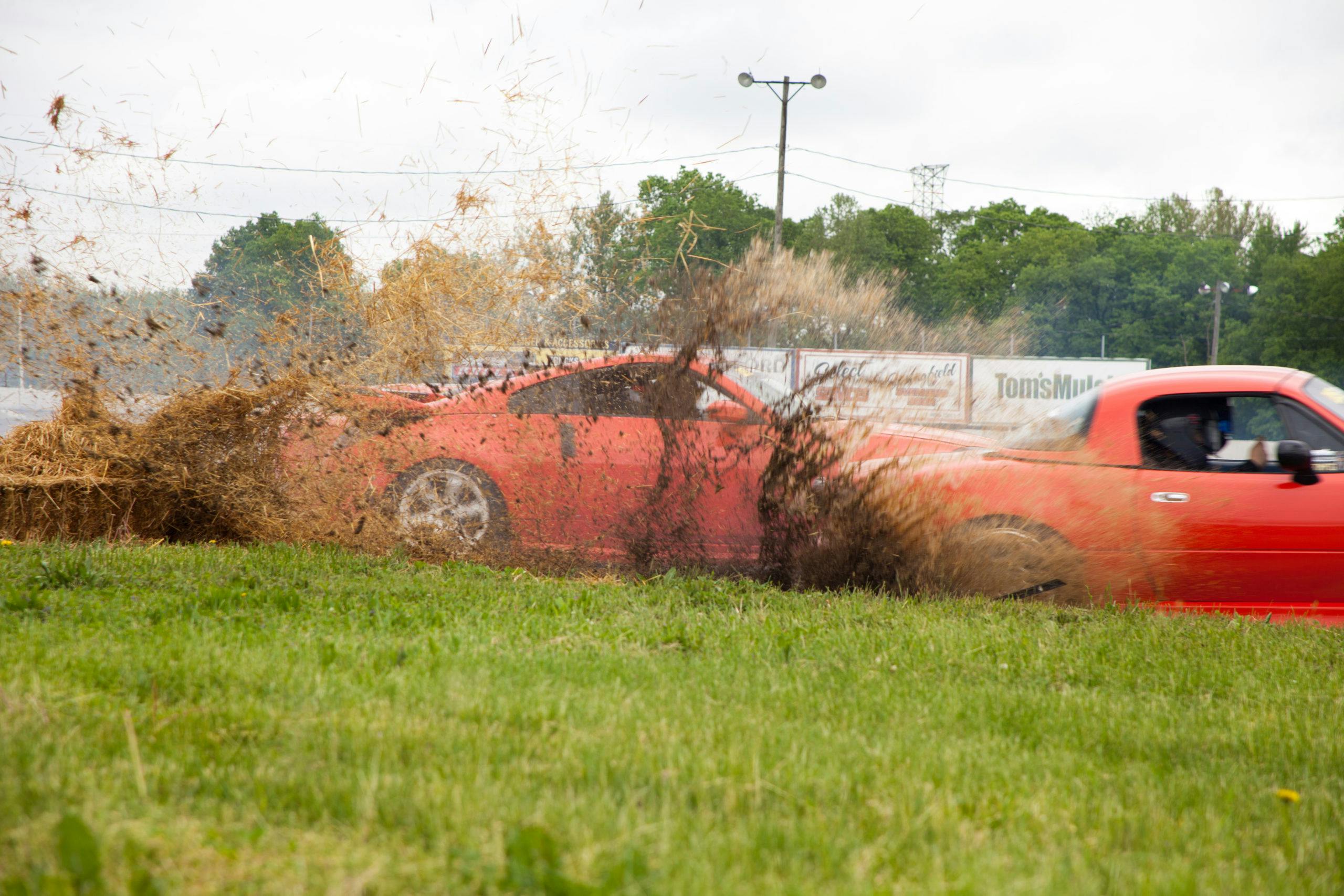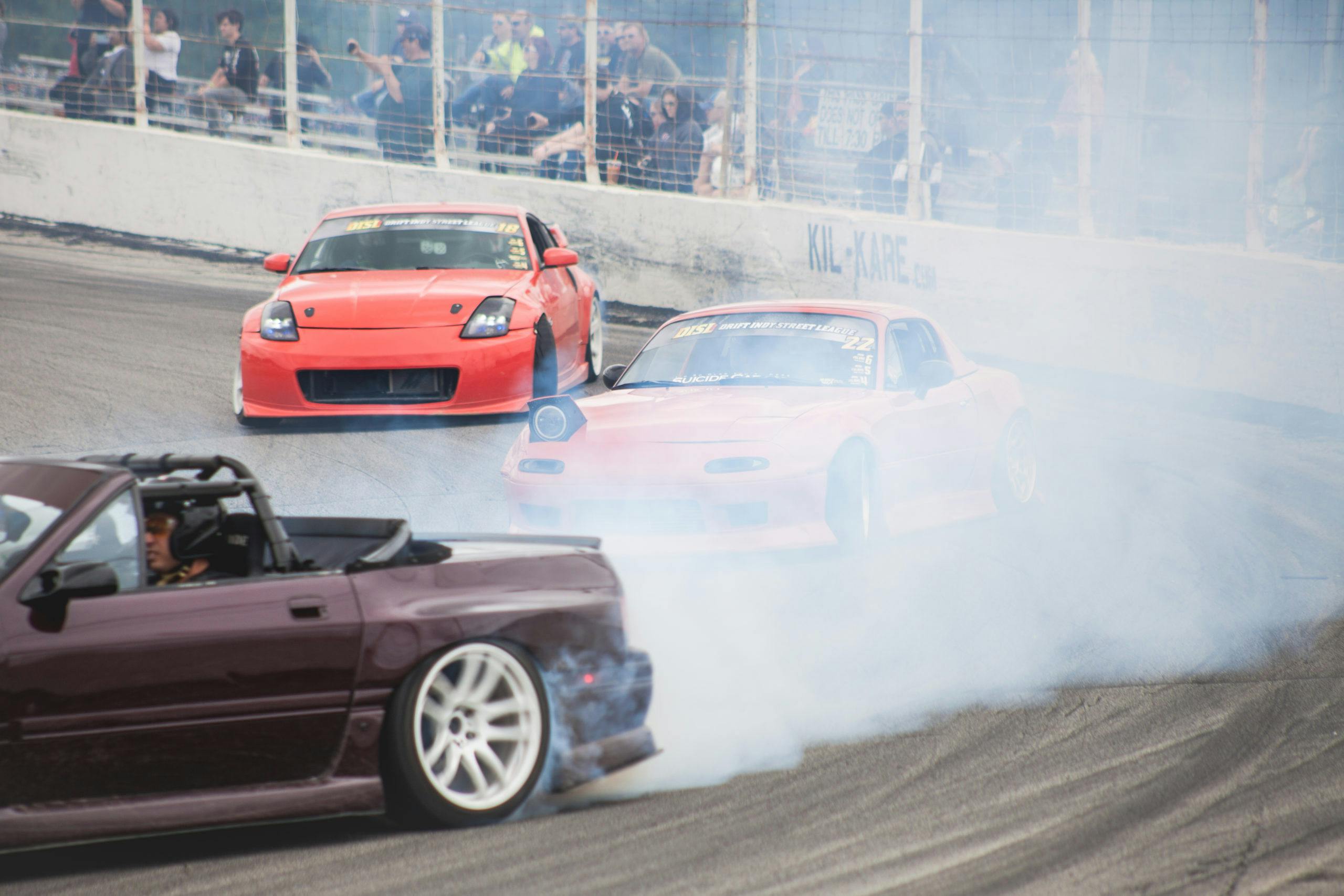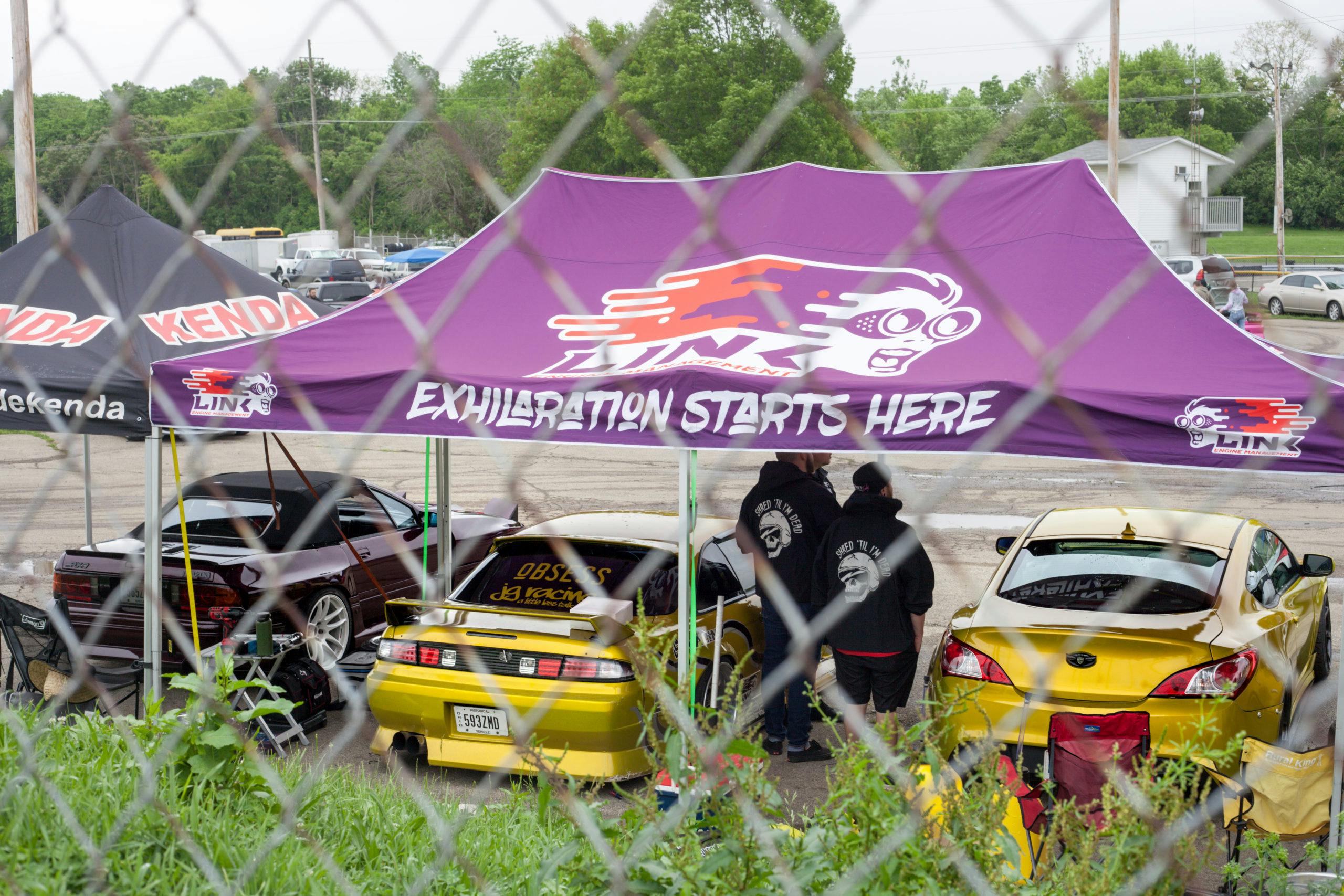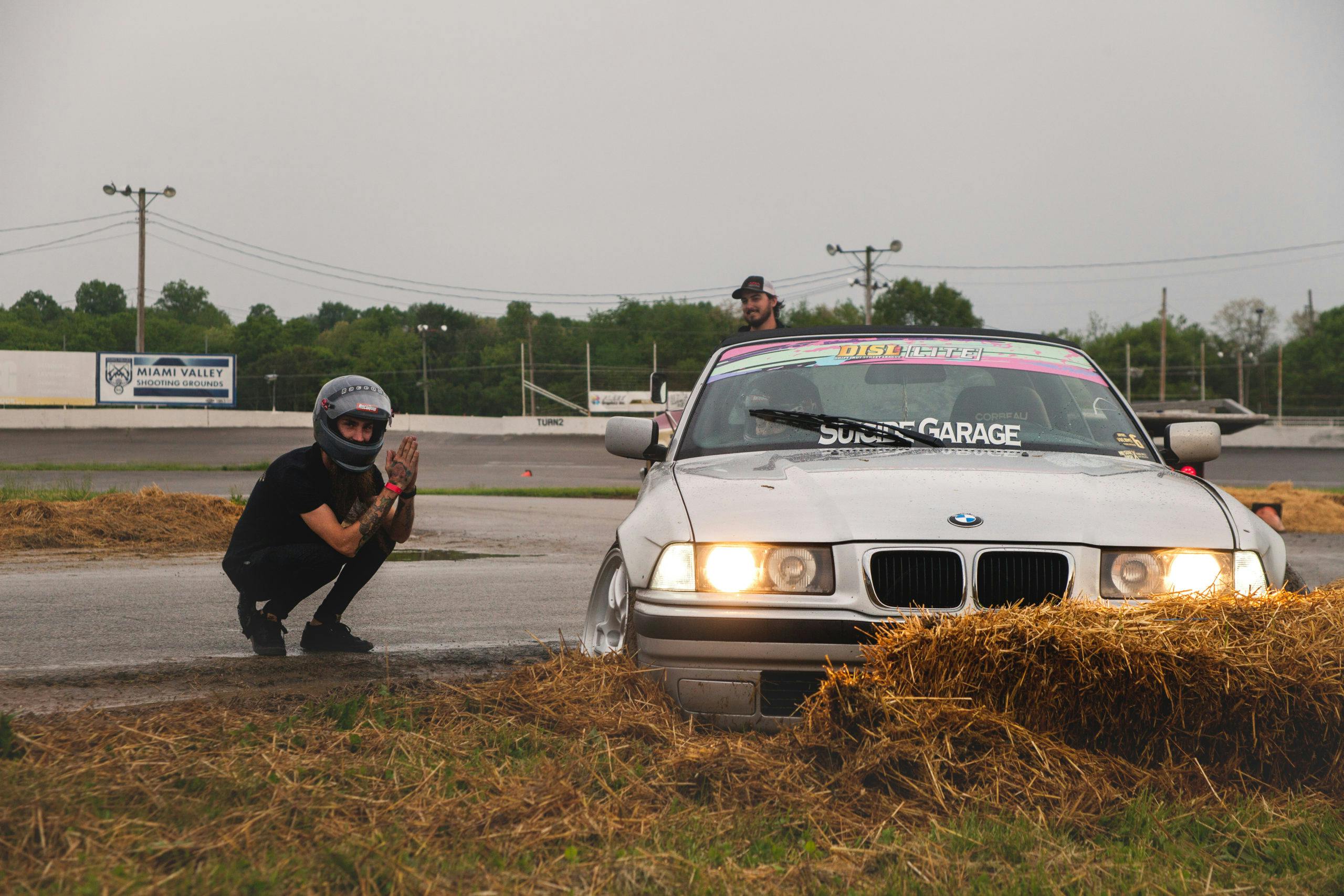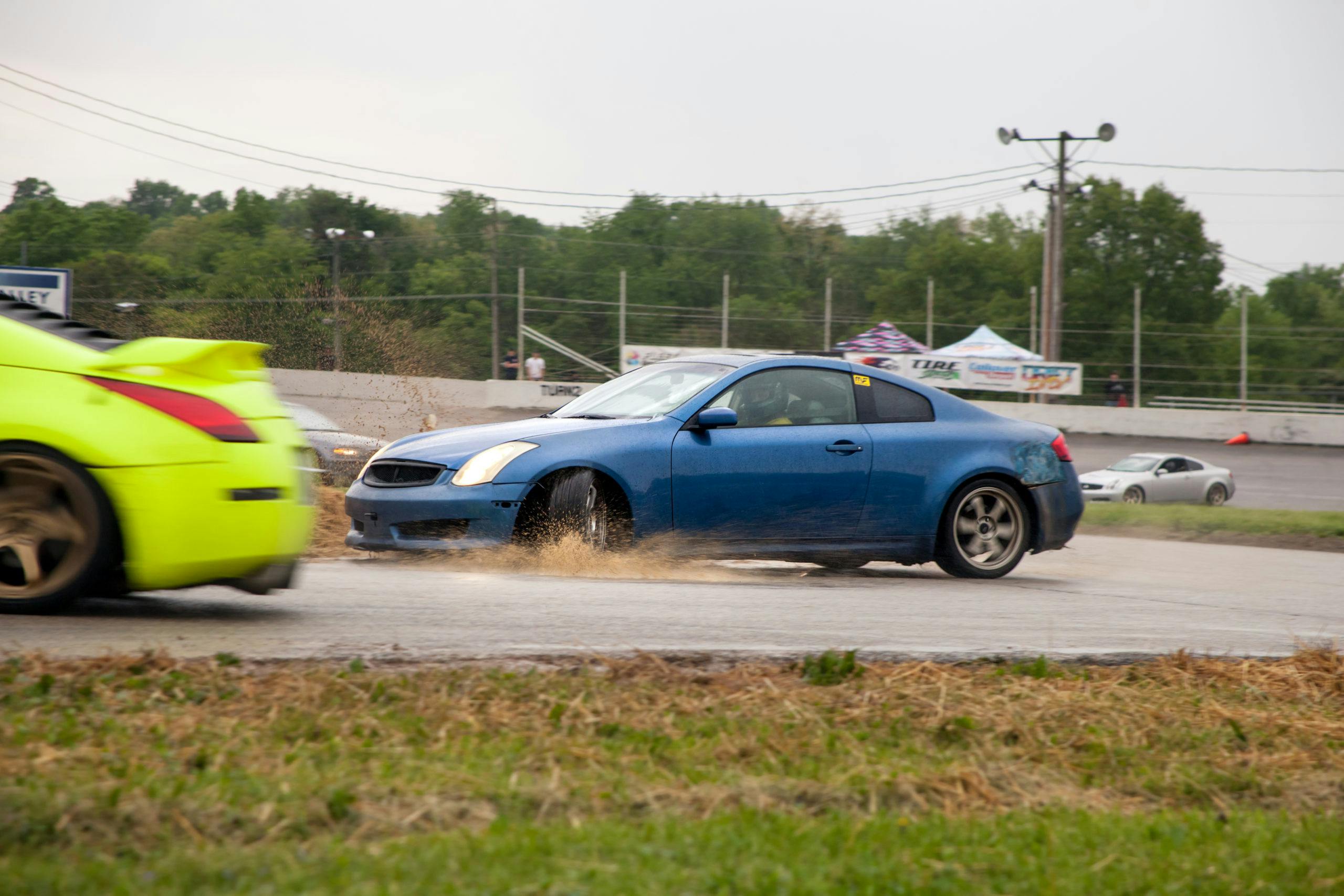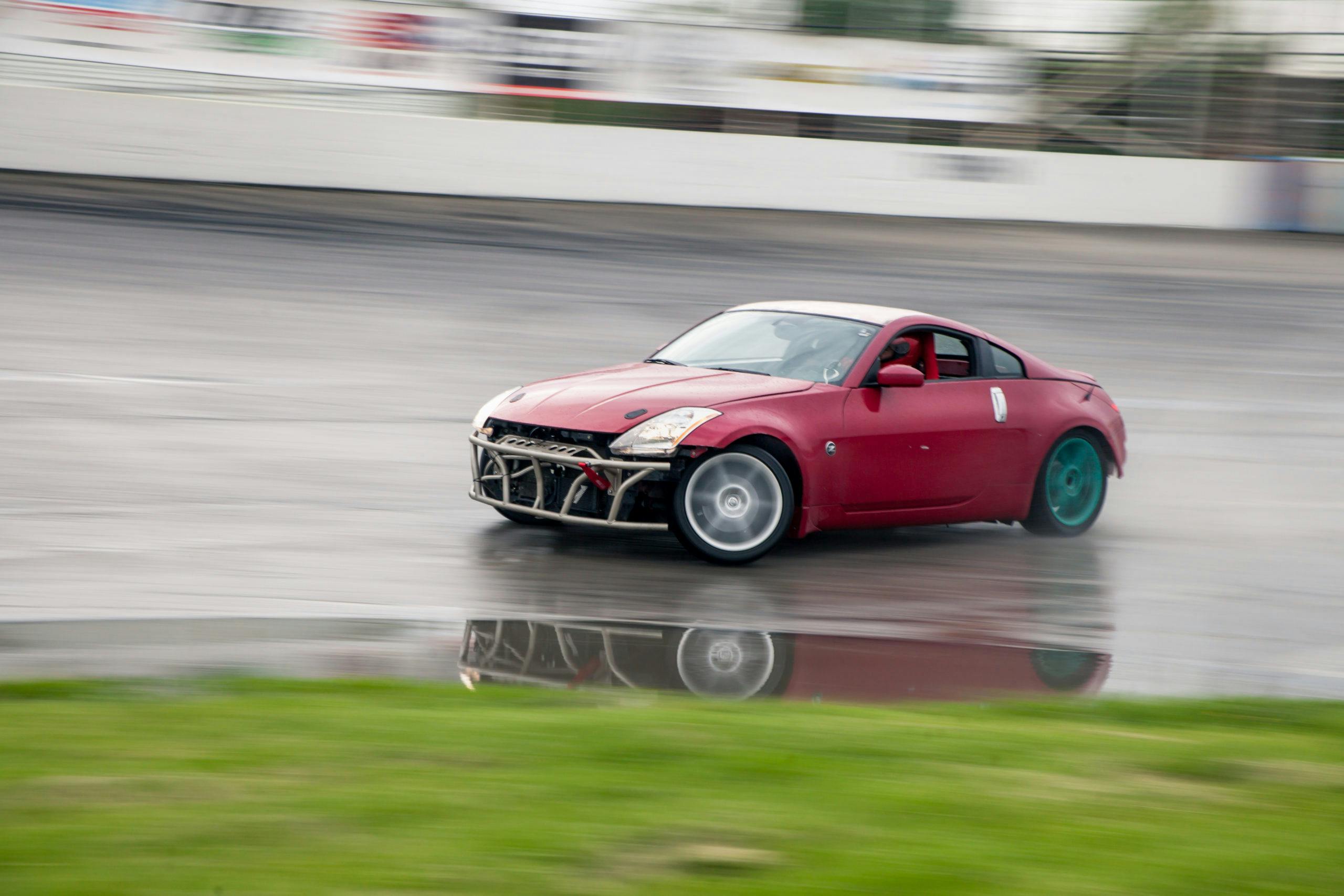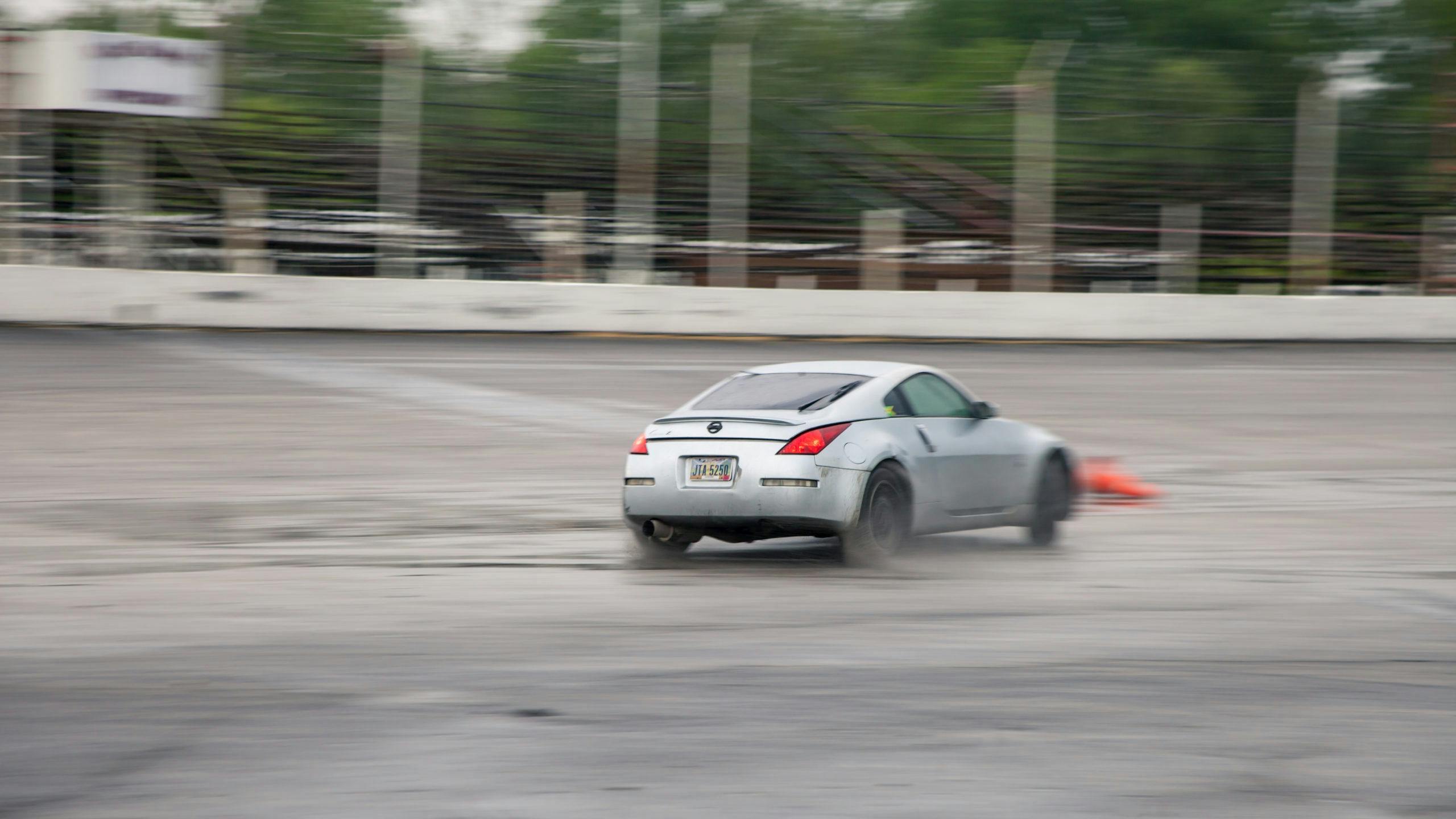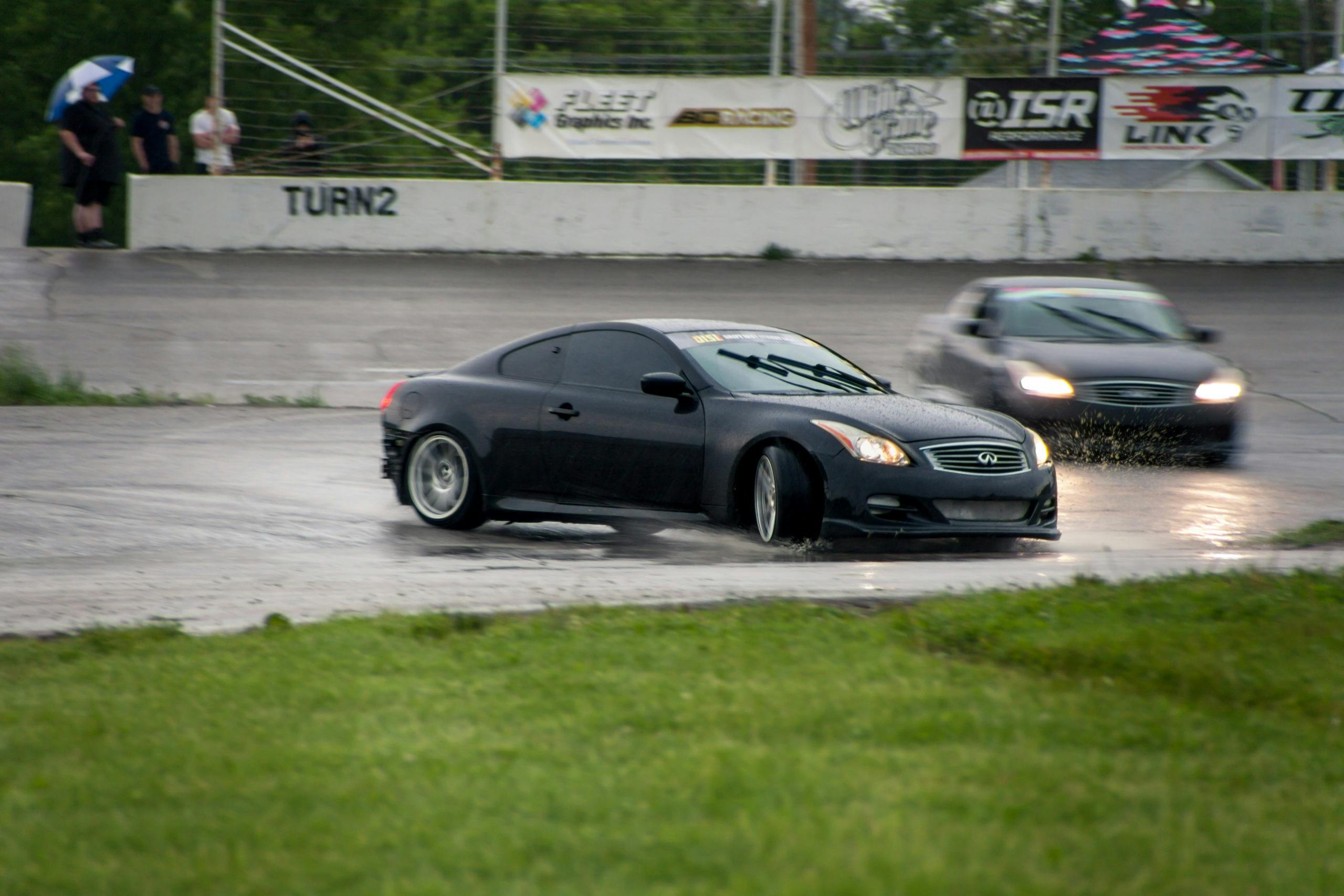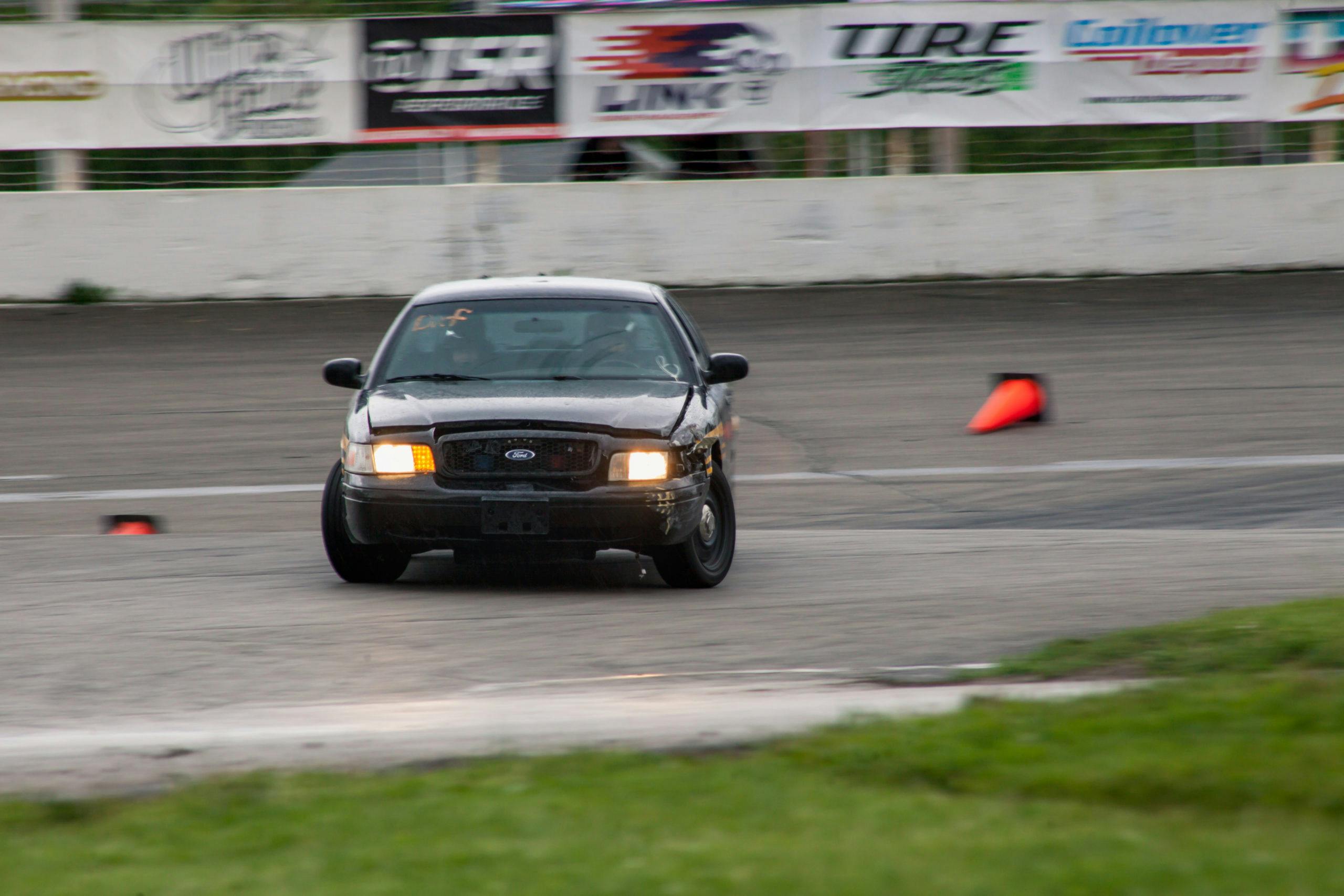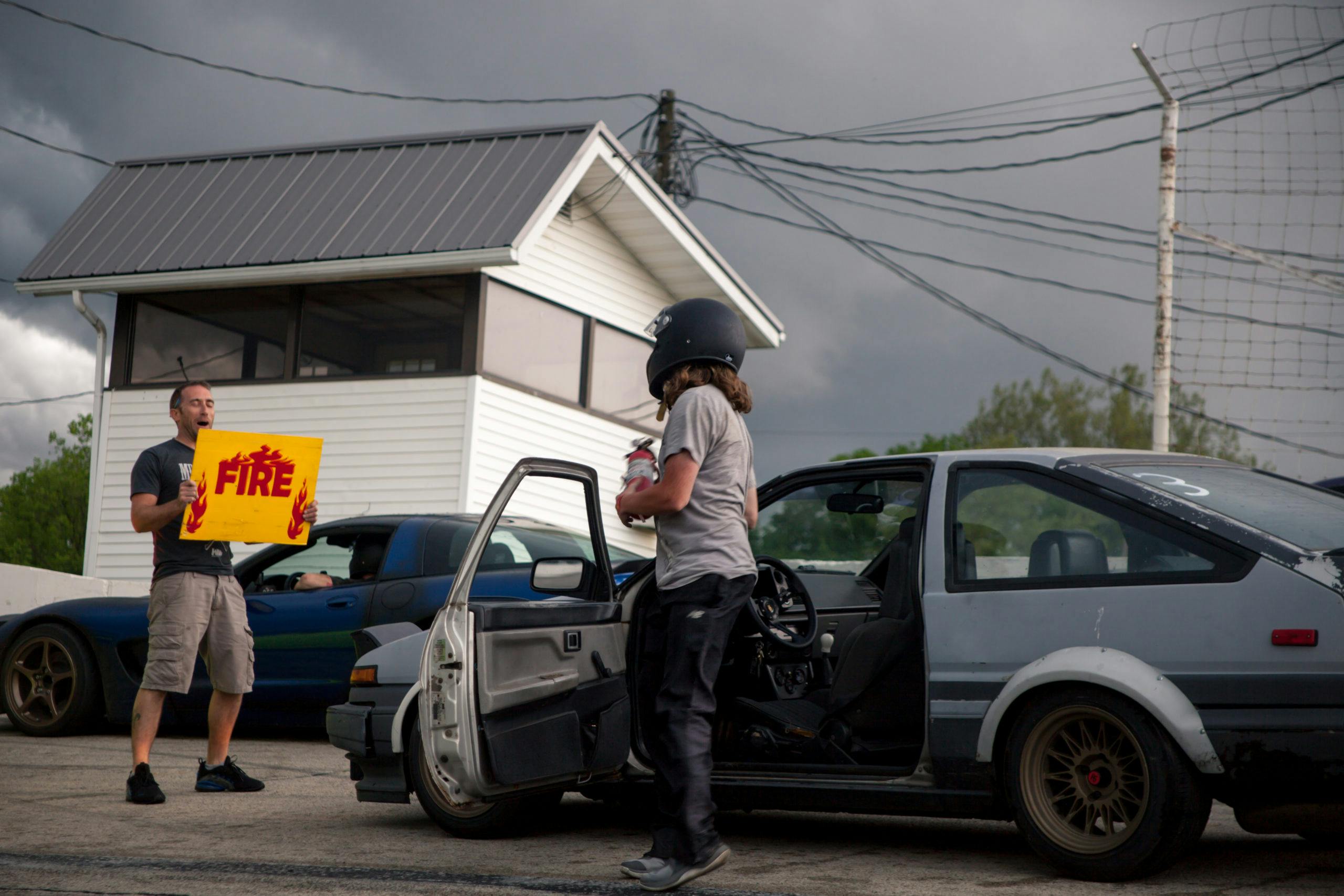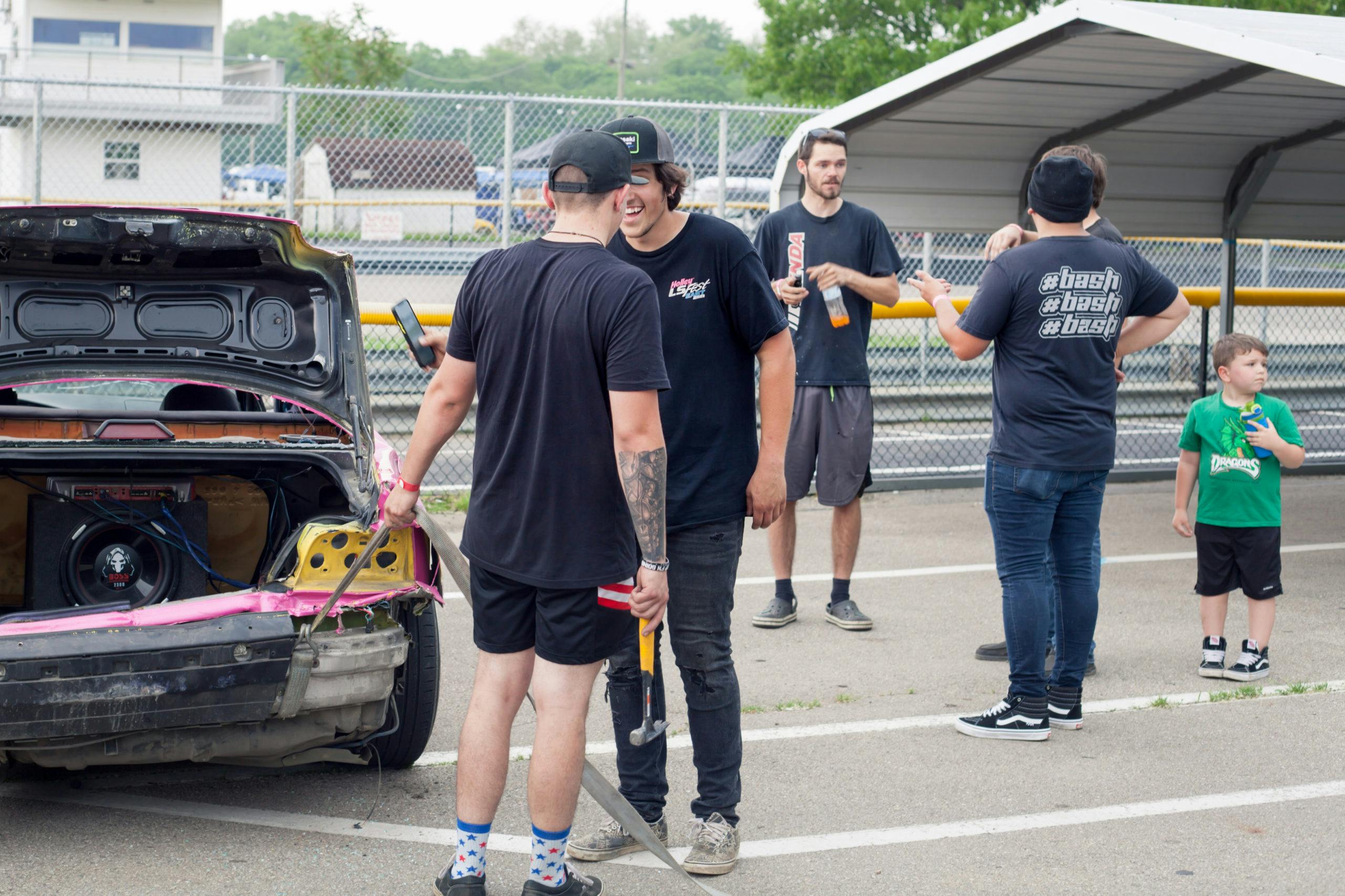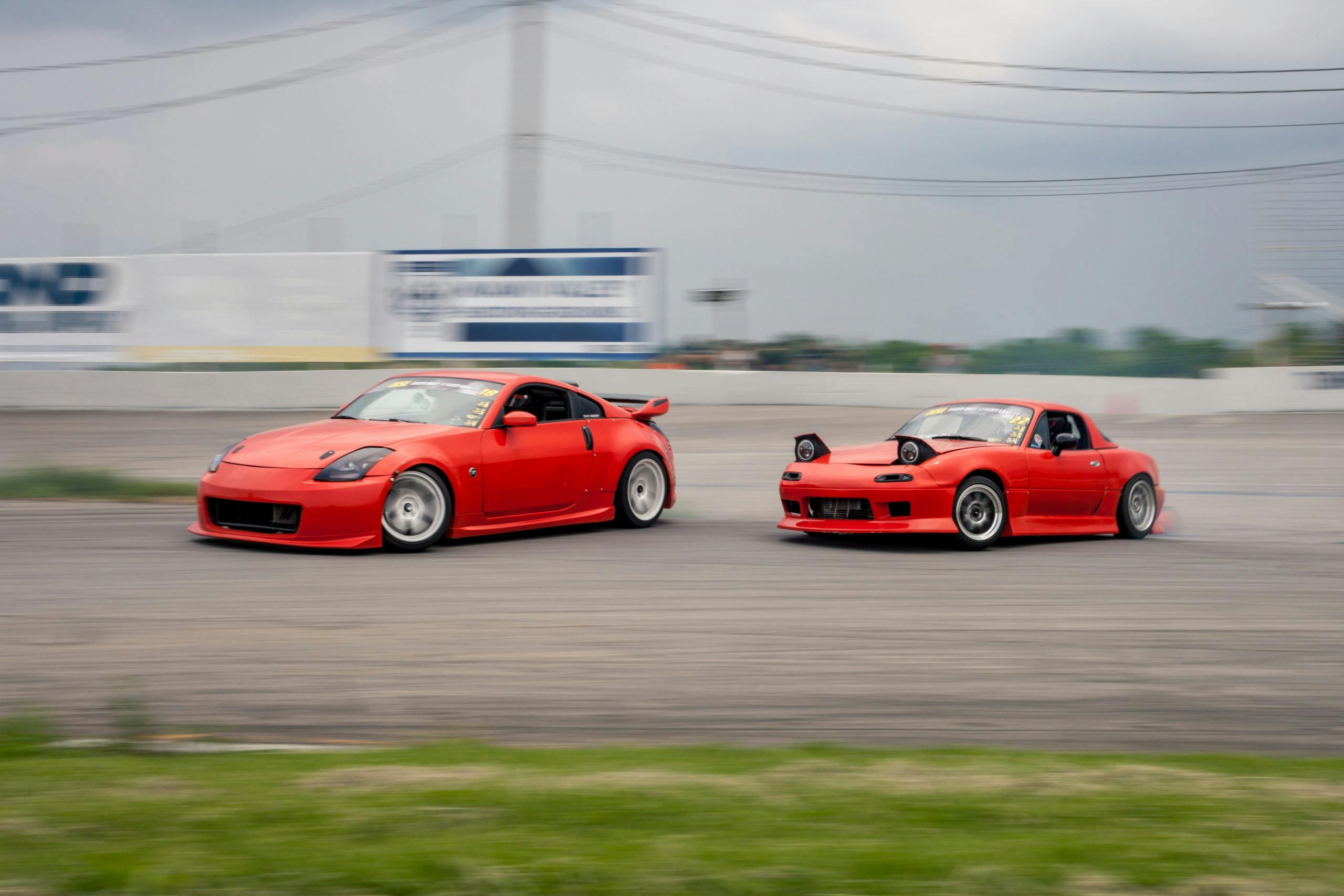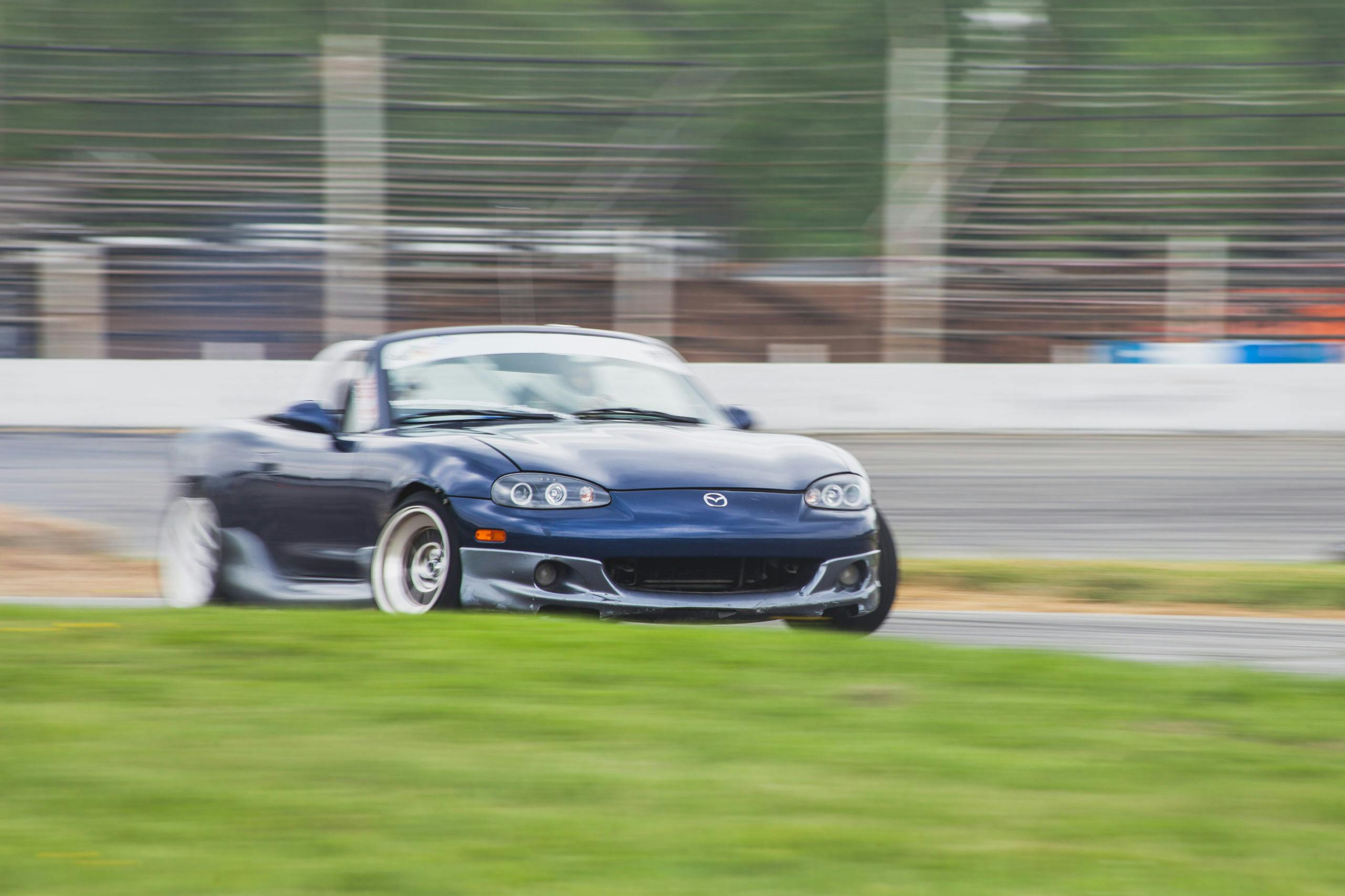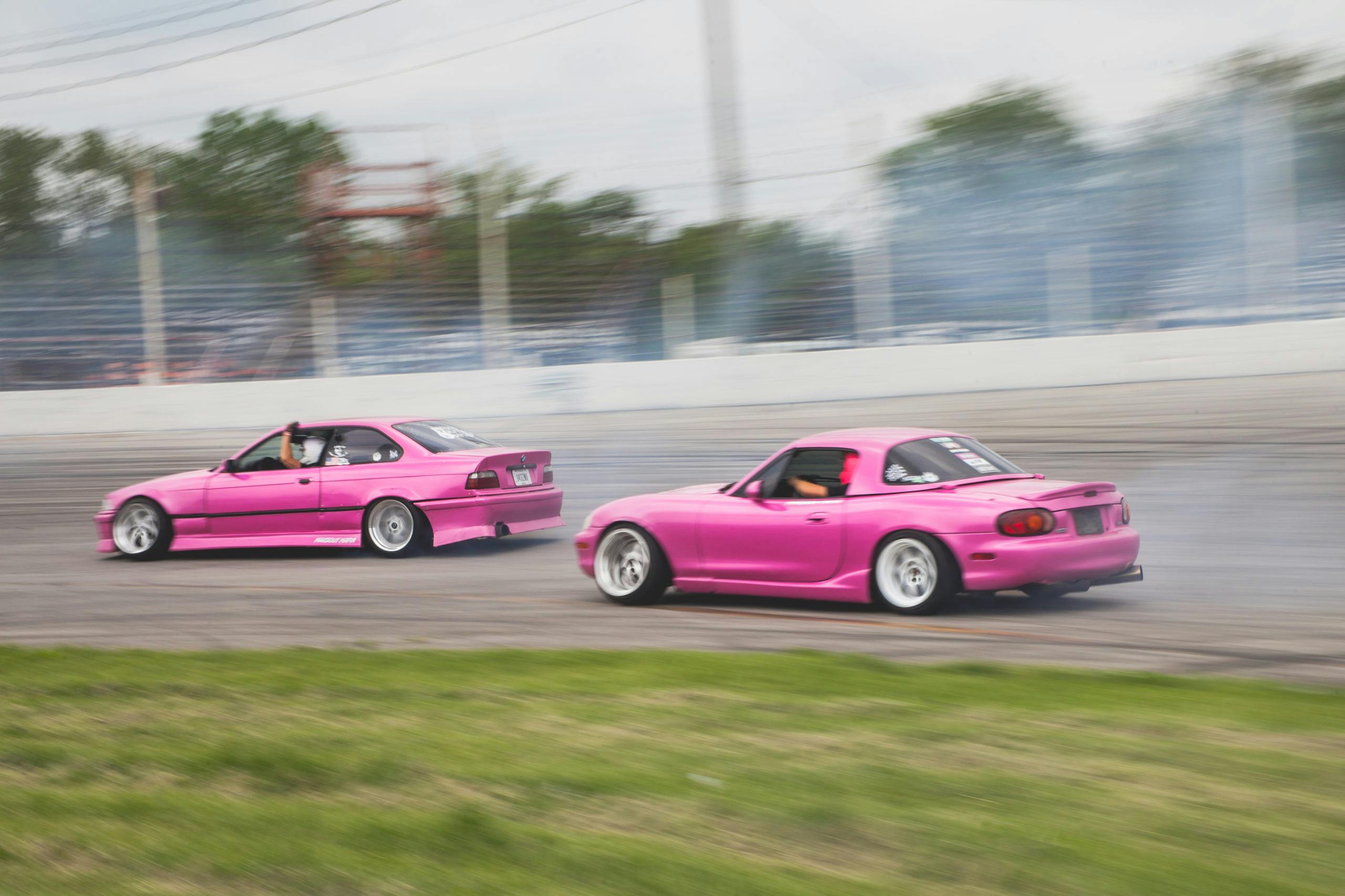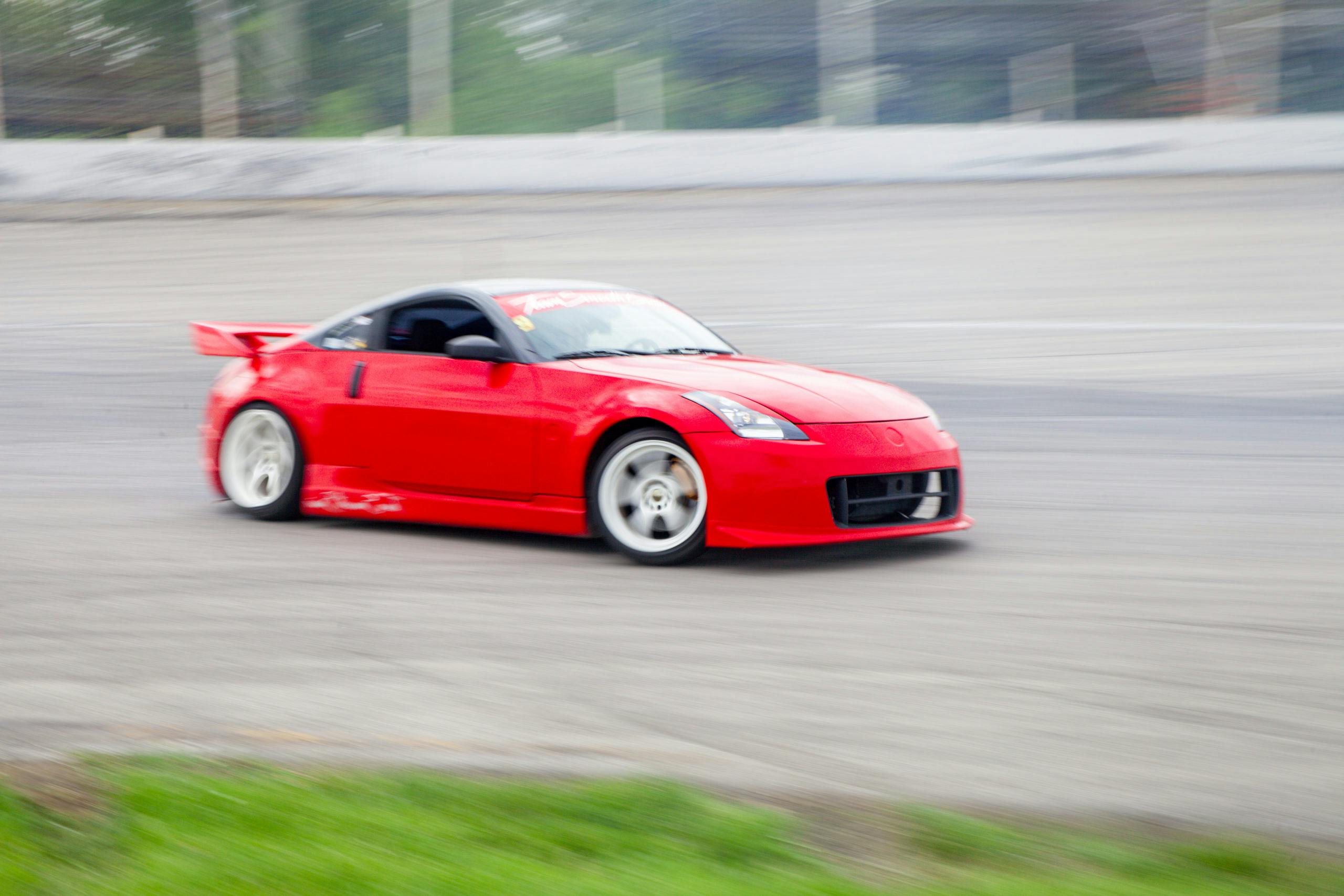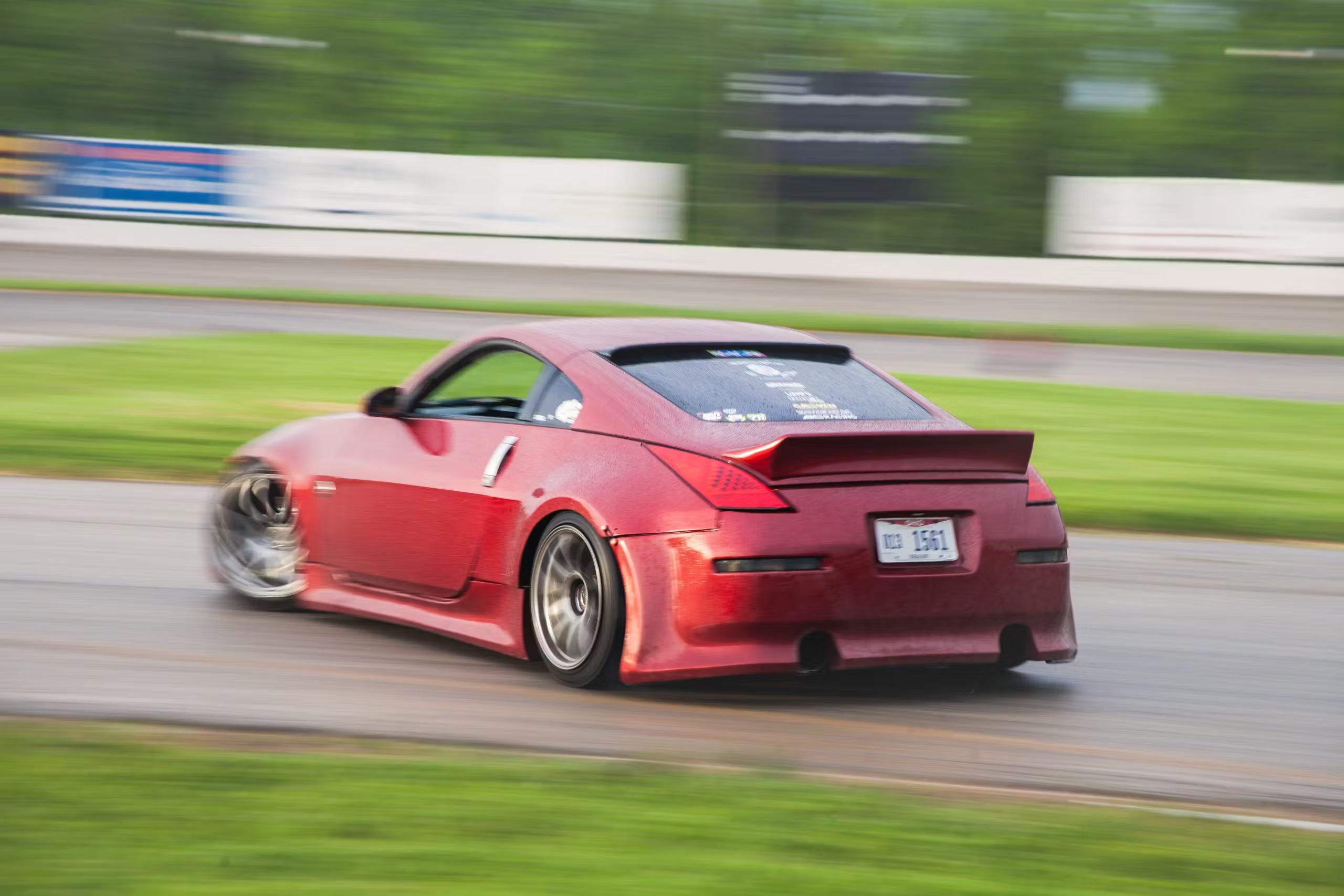Media | Articles
Drift Indy showcases grassroots drifting in Ohio
The cacophony is overwhelming. Shrieking tires, unmuffled engines, booming hip-hop and electronic music. Raucous fans.
Every spring, Midwest drifting enthusiasts flock to Kil-Kare Raceway and Dragway in Xenia, Ohio, to get their fill of smoky sideways action on the three-eighths-mile circle track. Colorful machines snake their way through a haze of tire smoke from banked turns to straightaways, into the infield, and then back onto the banked stuff. The aroma of burnt rubber, unburnt fuel, and perfectly cooked pizza permeate the air. Drifting is back in season.
The genesis of drifting is widely attributed to the on-track antics of Kunimitsu Takahashi, a prolific Japanese racer who piloted Grand Prix motorcycles, sports prototypes, touring cars, and—once—a Tyrrell Formula 1 machine. During the Japanese touring car races of the late 1960s and early ’70s, Takahashi would purposely break traction of his works Skyline GT-R while cornering. His ability to hit apexes while in a four-wheel slide captivated fans, who then tried emulating his exciting driving style on the mountain roads of Japan by sustaining a controlled drift through the bends.
Drifting remained underground until the late 1980s, when the first legal events were held on tracks. The sport first landed in America during a 1996 exhibition event hosted by the video arm of Option, a Japanese car magazine. It was still a curiosity for most Americans until D1GP, Japan’s top professional drifting series, started holding competitions in the U.S. in the early 2000s.
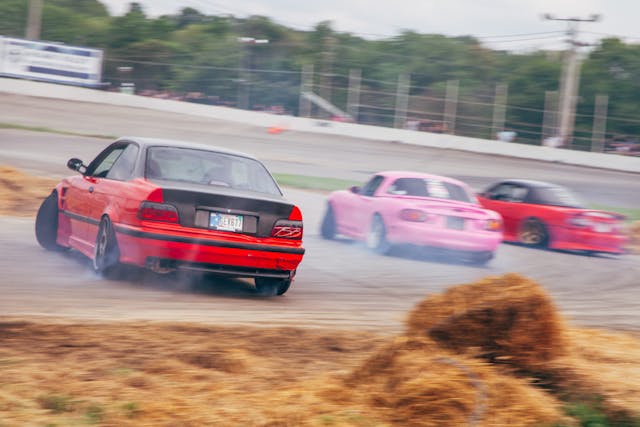
As the sport spread, scrappy upstarts like Edgar Sarmiento were looking for venues to host their own events. He organized the first pro-am competition at Kil-Kare in 2007. For most of the track’s history, it has hosted lower-tier NASCAR and NHRA-sanctioned events, but under the Drift Indy banner, Sarmiento has created an active and vibrant haven for Midwestern drifters.
Marketplace
Buy and sell classics with confidence
Drift Indy quickly sells out the 75–80 driver slots for every event and lures drivers from as far away as Kansas. “We try to keep drifting fun and we want our drivers to keep things simple and lap as much as possible,” says Sarmiento. “We have found over the years that these main components build confidence within our driver base, allowing our events to grow and to put on a show for who is around.”
Like most motorsports at the grassroots level, participants are regular people with regular jobs who share a passion for the hobby. The drivers are a close-knit bunch mostly comprised of millennials and zoomers who are never afraid to lend tools and spare parts. Seasoned drifters offer tips and ride-a-longs to those who are new to driving at Kil-Kare.
The few-hundred spectators lining the grandstands fall into two groups: Hoonigan-obsessed zoomers not yet able to afford cars of their own; and curious boomers wandering over from the quarter-mile drag strip that shares the grounds with the raceway.
Given the Japanese origin of the sport, slammed rear-wheel-drive Nissans, Mazdas, and Toyotas are a common sight in the paddock, though in recent years, Corvettes, Mustangs, and BMWs have gained popularity, likely due to the rising costs of once-common 240SXs and AE86 Corollas. The aggressive stance of the cars may seem like an exercise in style over substance, but pronounced front camber increases grip in order to help the driver control an unruly rear end.
The big chrome wheels, body kits, and flashy paint jobs, however, are purely for show. Despite a reputation for obliterating body panels, owners take pride in their drift machines. Car fashion reflects the driver’s personality and adds to the sideways spectacle. Would Evel Knievel be the icon he is today if he wore a plain jumpsuit and no cape?
At more than 60 mph, drifters perform a delicate dance as they maintain high degrees of slip angle—the direction the car is pointed versus the direction it’s going. They inch ever closer to the wall on the circle track’s banked turn, and the best veterans make linking the track (drifting the whole lap continuously) look easier than it is.
For those not yet comfortable with controlling a slide, Drift Indy offers instruction as well as a separate group for beginners. Newbies start out doing donuts around a cone on the straightaway before having a go at the rest of the track—like skateboarders trying their luck with an ollie first, before moving on to kickflipping down a stair set. Drivers typically average 50–70 laps per event, so there’s no shortage of opportunity to hone your driving skills during a weekend.
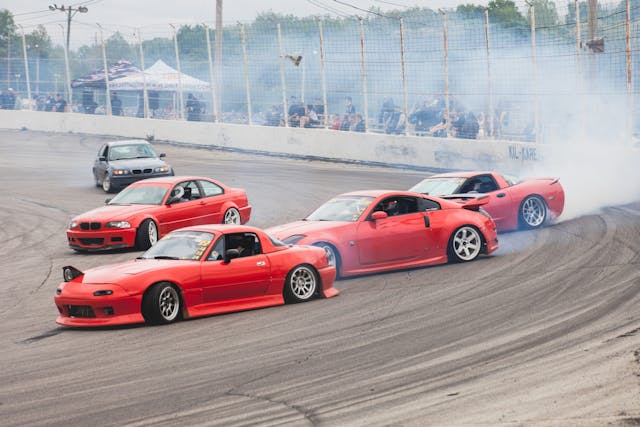
If your only exposure to drifting is the 1000-hp Formula Drift monsters that consume tires at an alarming rate, the discipline might seem prohibitively costly. However, you don’t need to spend cubic dollars in order to participate in drifting. Most grassroots drifters run cheap, no-name tires, and the recipe for a capable drift car is simple: Weld the spider gears of the rear differential (a welded diff spins both rear wheels at the same rate, making it easier to initiate oversteer), swap the factory suspension out for adjustable coilovers, and get a drift-centric alignment, with increased negative camber and positive caster on the front end.
Zach Smith, a Drift Indy devotee who pilots a Pepto-pink E36 BMW 3 Series, tries to keep his hobby’s budget reasonable.
“A little over a year ago, I wanted to build a drift car and have always wanted an E36. I finally came across one on Facebook Marketplace for a fair deal, but it was a rolling shell with no engine, no trans, and it was rough. We went and drug it out of some kid’s backyard and paid $300 for it,” says Smith. He invested about $4000 and countless hours to get the car ready for his first few events. He has since spent another $5000 and many more hours improving the driveline and suspension setup, not to mention the oh-so-important style.

As with other grassroots motorsports, Drift Indy and its organizers play an important role in planting the car-enthusiast bug. It’s one thing to see your favorite Youtuber having fun sliding cars, but being able to attend your local venue and experience drifting in person is far more tangible. The siren song of squealing tires, cool cars, and a welcoming community is too enticing to ignore.
